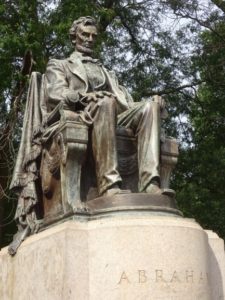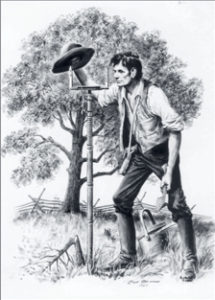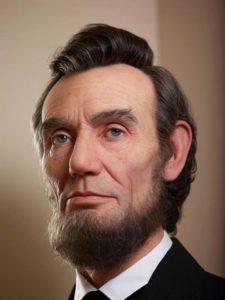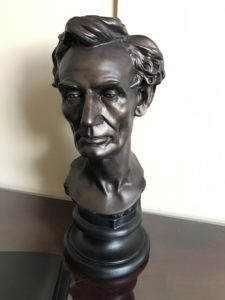 San Francisco targets Abraham Lincoln schools for renaming. Chicago targets Abraham Lincoln and other statues for possible removal. DC Congressional Delegate Eleanor Holmes Norton introduces a bill to remove the Emancipation Memorial statue in Washington, D.C. These efforts are severely misguided, based on political expediency rather than an informed discussion of Lincoln and other past American leaders.
San Francisco targets Abraham Lincoln schools for renaming. Chicago targets Abraham Lincoln and other statues for possible removal. DC Congressional Delegate Eleanor Holmes Norton introduces a bill to remove the Emancipation Memorial statue in Washington, D.C. These efforts are severely misguided, based on political expediency rather than an informed discussion of Lincoln and other past American leaders.
I’ve been addressing the issues surrounding removal, and consideration of removal, of Confederate statues across the nation. There is a rational case for removing Confederate statues. There is no rational case for removing Abraham Lincoln statues.
The motives are understandable and I strongly encourage an open and honest discussion of problematic statues. In my “rational case” post I explained that there are three time periods reflected by, and must be considered, for every statue: the subject, the motive and timing of erection, and the present. Norton’s bill to remove the Emancipation Memorial statue is based almost entirely on the present perspective. While many believe that present perspective overrides the two earlier perspectives, proponents of removing the statue are obligated to make that case in a public forum, not by arbitrarily passing a bill by politicians without any interest in the discussion or the outcome, i.e., 99%+ of the House Representatives and Senators who would vote on the bill. Norton would better serve her constituents by using her power to garner news coverage, input from the city, from the National Park Service (who owns the statue, hence the need for a law before it can be removed or augmented), and a much needed discussion of the larger issues beyond the presence of the statue. This last point is critical and I’ll return to it shortly.
While the Emancipation Memorial is controversial because of its inherent design elements (Boston removed its copy of the statue for this reason), the actions by San Francisco and Chicago have no such controversies stimulating their actions. Instead, they are acting based on misrepresentation of Lincoln’s attitudes and actions.
San Francisco has every right to name, or rename, schools within their jurisdiction. Their far-ranging list of names they want to move away from includes several U.S. Presidents, the current California Senator (who was once Mayor of San Francisco), environmentalist John Muir, and many others. While some of the reasons are potentially persuasive, others border on the ridiculous.
Regarding Abraham Lincoln, the chair of the renaming committee argued that “Lincoln, like the presidents before him and most after, did not show through policy or rhetoric that black lives ever mattered to them outside of human capital and as casualties of wealth building.” This comment is simply absurd. Lincoln was literally murdered because his assassin listened to Lincoln argue for black voting rights. Lincoln issued the Emancipation Proclamation, which freed enslaved people and brought African Americans into the armed forces, which played a large role in why the Union won the Civil War. As the Spielberg movie Lincoln dramatically documented, Lincoln acted aggressively to ensure passage of the 13th Amendment ending slavery. African American leaders like Frederick Douglass recounted their personal experiences with Lincoln, all saying that he treated them like any other American. As historian Jonathan White explains in Smithsonian, Lincoln most certainly believed black lives mattered.
The spreadsheet outlining the reasons for renaming noted that Lincoln was “not seen as a hero” among Native Americans “as the majority of his policies proved to be detrimental to them.” By this standard, every American president before Lincoln – and since Lincoln – would not be acceptable for naming schools, including Ronald Reagan. The country has a long history of maltreatment of Native populations; Lincoln neither enlarged it nor shrunk it during his time in office. Given he was faced with the most critical existential crisis of our nation’s history, the Civil War, which did not end until the time he was assassinated, it is unrealistic to expect that he would have to time to reverse long-standing attitudes and policies that virtually no one in the country was acting to change. And yet in his last two annual messages to Congress he did call for a reevaluation of the government’s treatment of Native Americans, something he had planned to deal with in his second term after the war was over if he had lived to do so.
Chicago, yes, even Chicago, has also recently called for the reevaluation of 41 statues and monuments within the city as part of their “racial healing and historical reckoning project.” Again, the focus of the Lincoln statues is because the committee “determined Native Americans were mistreated during his administration.” The points made above apply to Chicago’s actions as well. Part of this idea is a misunderstanding of Lincoln’s role in the “Dakota 38,” which resulted the hanging of 38 Dakota Native Americans in Minnesota in 1862. I’ve discussed this misunderstanding in depth here.
Which gets me back to the idea for a much needed discussion of the larger issues beyond the presence of the statue. Removing these statues and renaming schools does not make these larger issues – white supremacy, systemic racism, continuing disadvantaging of BiPOC individuals suddenly disappear. In some ways it may exacerbate them, especially when the reasons presented for removal are based on misrepresentation and misunderstanding of history, along with unrealistic expectations of perfection in our past leaders. These are not Confederates who literally chose to divide America, they are leaders who fought hard to create, protect, and bring America closer to the ideal of a more perfect Union. They were human, like all of us, and should be treated as human, not as some idealistic “god” of humanity who aren’t allowed not be perfect.
So rather than simply remove statues by edict for political expediency, current day leaders should take advantage of the opportunity our more recent awareness affords us and lead public discussions across America. Rather than pass a resolution to rename schools on misinformation, use the school names as a focal point for deep public education. Neither San Francisco, nor Chicago, nor Washington, D.C. involved historians in their debates. How is that even possible? Historians expert on each of the historical figures are happy to participate in discussions with school boards or monument commissions. They, we, are happy to sit down with the public and policy-makers to help everyone better understand the relevant history. That’s what we do.
Ultimately, it is up to those responsible communities to decide how they will proceed. Undoubtedly there are some historical figures that we will, and should, choose no longer to honor. But that discussion should be done in the open. Beyond that, the discussion must include the larger issues that remain even after statues and school names are removed. Leaders have an opportunity to lead; they must embrace this opportunity, not hide from it by making arbitrary decisions.
David J. Kent is an avid science traveler and the author of Lincoln: The Man Who Saved America. His previous books include Tesla: The Wizard of Electricity and Edison: The Inventor of the Modern World and two specialty e-books: Nikola Tesla: Renewable Energy Ahead of Its Time and Abraham Lincoln and Nikola Tesla: Connected by Fate.
Follow me for updates on my Facebook author page and Goodreads.
Like this:
Like Loading...
 Abraham Lincoln briefly considered apprenticing as a blacksmith. Most subsistence farmers also doubled as tradesmen, working as coopers (barrel makers), tanners (leather makers), distillers (whiskey), brickmakers, shoemakers, or blacksmiths. While still in Indiana he and Dennis Hanks had spent many evenings in the Gentryville general store and at Baldwin’s blacksmith shop trading stories and “yarns,” so Lincoln had seen many an hour of blacksmithing in action.
Abraham Lincoln briefly considered apprenticing as a blacksmith. Most subsistence farmers also doubled as tradesmen, working as coopers (barrel makers), tanners (leather makers), distillers (whiskey), brickmakers, shoemakers, or blacksmiths. While still in Indiana he and Dennis Hanks had spent many evenings in the Gentryville general store and at Baldwin’s blacksmith shop trading stories and “yarns,” so Lincoln had seen many an hour of blacksmithing in action.


 San Francisco targets Abraham Lincoln schools for renaming. Chicago targets Abraham Lincoln and other statues for possible removal. DC Congressional Delegate Eleanor Holmes Norton introduces a bill to remove the Emancipation Memorial statue in Washington, D.C. These efforts are severely misguided, based on political expediency rather than an informed discussion of Lincoln and other past American leaders.
San Francisco targets Abraham Lincoln schools for renaming. Chicago targets Abraham Lincoln and other statues for possible removal. DC Congressional Delegate Eleanor Holmes Norton introduces a bill to remove the Emancipation Memorial statue in Washington, D.C. These efforts are severely misguided, based on political expediency rather than an informed discussion of Lincoln and other past American leaders. The Sangamon County Deed Record on February 17, 1836 has this notation from Abraham Lincoln, the Surveyor.
The Sangamon County Deed Record on February 17, 1836 has this notation from Abraham Lincoln, the Surveyor. Abraham Lincoln was working in his second floor office on February 10, 1864 when he realized the White House stables were on fire.
Abraham Lincoln was working in his second floor office on February 10, 1864 when he realized the White House stables were on fire. On February 2, 1865, Abraham Lincoln headed to Hampton Roads in Virginia for a peace conference. It almost killed the 13th Amendment.
On February 2, 1865, Abraham Lincoln headed to Hampton Roads in Virginia for a peace conference. It almost killed the 13th Amendment.






